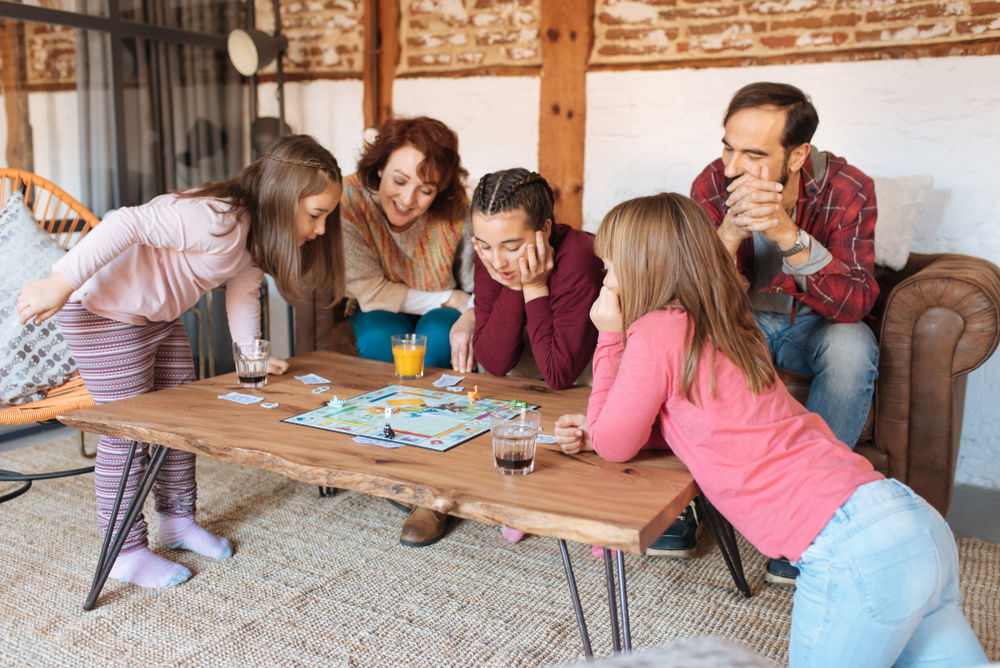Highlights
- More families in the working-class community where we live are starting to feel the effects of the coronavirus. Post This
- When this current pandemic has come and gone, will we find a way to ensure that all workers are able to stay home when they are sick—for the good of individuals and families, but also for the safety of everyone else? Post This
Editor's Note: The following essay, originally published on March 23, 2020, is our fifth most popular post of the year.
It was early on a Sunday night in mid-February when Tonya, a 29-year-old mother of five in southwestern Ohio, got into bed and posted on Facebook: “Headed to bed early tonight… exhaustion really can make you sick.” Tonya’s husband, Lance worked full-time as a mechanic and she was a nanny. That week, she’d watched her employer’s kids while they had coughs and fevers. Now, Tonya’s throat was so sore she felt like it was bleeding, and she was losing her voice.
Two days later, Tonya was convinced she was dying. She had a fever, no energy, and was having trouble breathing. “I have never felt this bad in my life,” she posted on social media, which was saying a lot from a woman living with diabetes who’d been through other medical crises before, including cervical cancer. She ended up in the ER and was given oxygen and breathing treatments.
Lance used vacation time to take off while she was in the hospital, but when Tonya came home, he went back to work, although she was still miserable and her children, two of whom have immune deficiencies, now had coughs and fevers as well. Tonya was barely able to function, dizzy when she’d stand up, afraid she would pass out. On February 21, she ended up back at the hospital—“I feel like I should sign a lease and just move in at this point,” she joked. Lance took another day off work to take care of the kids.
This time, the doctor asked all kinds of questions that the previous doctor hadn’t asked, including about travel. The father of the family Tonya nannied for traveled regularly and had been to at least four different countries since January, including his most recent trip: three days in Hong Kong. The doctor mentioned a new virus that was spreading and that it was possible Tonya had it. But he said they didn’t have testing capabilities yet. They kept her for 24 hours to monitor her, then sent her home. She spent the weekend sleeping.
On March 2, Tonya’s employer let her know that they had decided to send their kids to daycare, which Tonya understood, and they parted amicably. On the same day, Lance’s employer terminated him for taking too many days off work during the week that Tonya was in the hospital and for being tardy a couple of times (by about 5 minutes). He’d worked for the company for almost a year, but at the company’s request had recently switched locations and was therefore in a new 90-day probationary period (during which it was unclear if the provisions of the Family & Medical Leave Act applied).
“This isn’t right,” he and Tonya agreed.
Both Lance and Tonya are now looking for new jobs. Now that Ohio schools are closed, the couple is spending most of their time homeschooling their five children and repainting the home that they rent. The plan is that whoever gets a job first will go back to work while the other will stay home with the kids. They managed to pay their bills for March with the remainder of their tax refund and by cashing out Lance’s 401K and his remaining vacation time. They’re getting food from the food pantry and hoping that unemployment will come through, though they’ve had problems accessing the site because of frequent crashes due to the jump in people filing. In the first three days of last week, 78,000 people in Ohio filed for unemployment, compared with 6500 in the entire week prior.
In their town, population roughly 5,000, the community Facebook page has become a hub of neighborliness, the occasional conspiracy theorist, and lots of resources: lists of which stores have toilet paper and other supplies in stock, food pantry hours, an emergency feeding program for kids out of school, a number to call for a case of free formula, and a group to support small business owners, among others.
More families in the working-class community where we live are starting to feel the effects of the coronavirus. Two other families I spoke with are facing temporary unemployment while factories shut down for several weeks to sanitize their facilities and evaluate what comes next. Another family is having difficulty finding and affording the specific formula that their daughter with allergies needs. Another family went from two incomes to one after a forced layoff. A mother looking for a job scrapped that plan when she got the news that her kids would be out of school.
“Life is in limbo at the moment,” Shayla, a mother of two, told me. She was in her last semester of a two-year dental hygiene program when the campus was shut down, graduation canceled, and license exams postponed. She’d worked hard for almost two years: each week, dropping her two girls at daycare by 6:30 a.m. in order to drive to Dayton for classes from 8:00 to 5:00, Monday through Friday, “like a full-time job except we pay to be there.” Shayla was hoping to land a job this summer, but with dental offices closed, the job market has changed. “My school stuff is still in boxes in my car,” she said. “I don’t have the heart to bring it in and unpack.”
Despite her sadness, Shayla said, “I appreciate how often our leaders are doing press conferences, getting up there so we can see their faces, keeping us informed so people don’t panic.”
With layoffs at her husband’s job, she hopes he will remain unaffected. Without his income, she estimates they’d need $2500 - $3000 a month in order to get by. A stimulus check from the government would help out a lot, but Shayla also worries about the long-term effects.
“Of course, I want everyone to be helped, and our family would benefit,” she said thoughtfully. “But knowing what our national debt is I also wonder what will be the effect will be on the nation as a whole? Money doesn’t come out of thin air.”
Tonya and Lance also say they need about $3000 (which was about what Lance’s income was before he lost his job) in order to pay essential bills and get groceries for their family of seven each month. They’re hoping something will come through in time for them to cover their bills for the month of April.
This working-class couple won’t ever know for sure whether their joblessness is the result of coronavirus or something else since Tonya was never tested, but regardless, their story highlights the personal cost when companies don’t honor employees’ need for sick days to care for themselves or family members. (This isn’t the first time we have highlighted Lance and Tonya’s struggles to achieve economic security—our first two posts about them from almost five years ago illustrate how vulnerable working-class employees are.)
In a time like this, the public health implications of such gaps are also evident. An estimated 3 million workers work sick every day, and 7 in 10 low-wage workers do not have paid sick leave. American Enterprise Institute resident scholar Aparna Mathur recently argued that paid medical leave is “a sensible” response to COVID-19. Though experts have debated the merits of paid sick leave—some worrying about possible negative effects on employers and repercussions for employees when it comes to hiring and salaries—Mathur points out that
One option is to fund medical and sick leave as a social insurance program and through employee payroll taxes. One can justify this on the grounds that allowing workers paid days off from work when they are unwell generates a societal benefit or a positive externality. It also eases the costs on any individual worker or firm of paying for the time off.
When this current pandemic has come and gone, and temporary COVID-19 paid sick leave regulations have expired, will we find a way to ensure that all workers are able to stay home when they are sick—for the good of individuals and families, but also for the health and safety of everyone else?
Amber Lapp is a Research Fellow at the Institute for Family Studies and, along with her husband David, co-investigator of the Love and Marriage in Middle America Project, a qualitative research inquiry into how white, working-class young adults form families and think about marriage.










